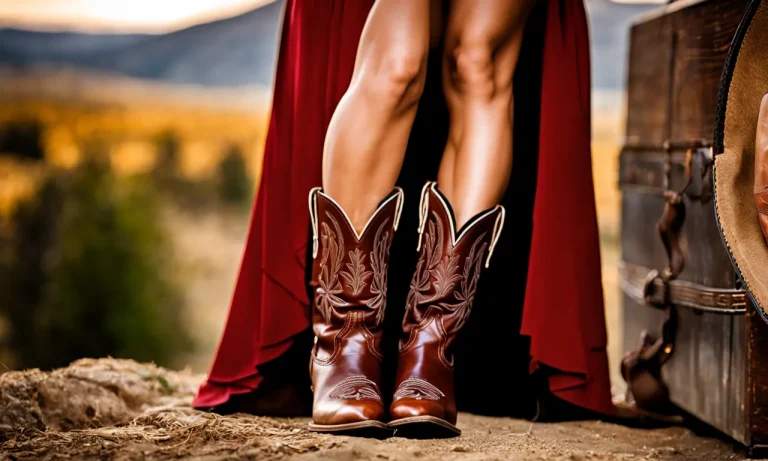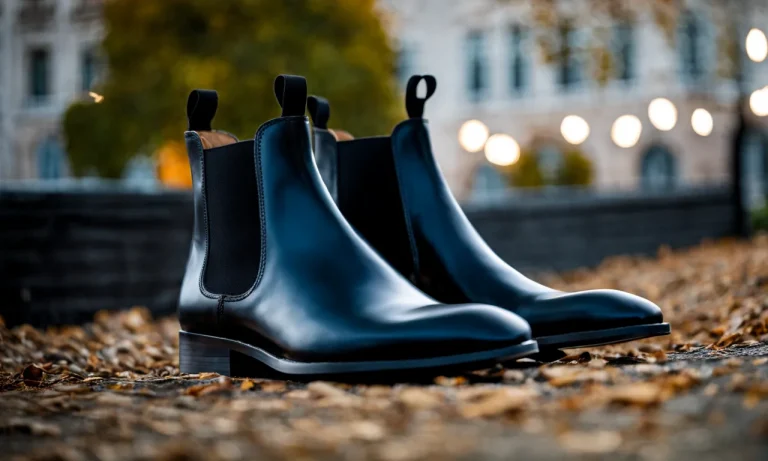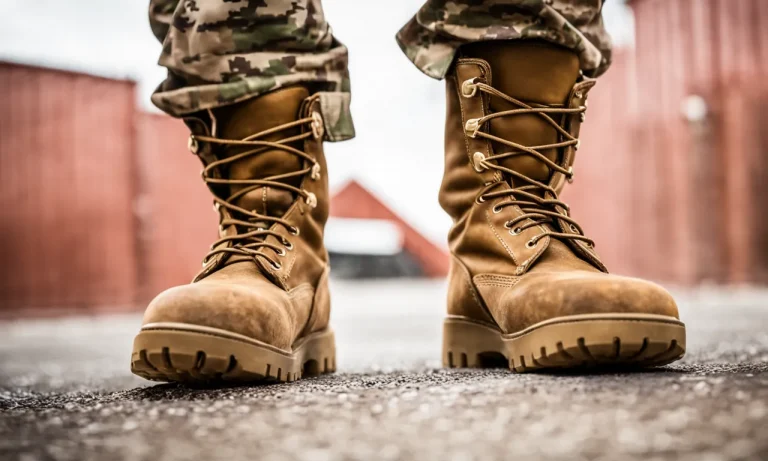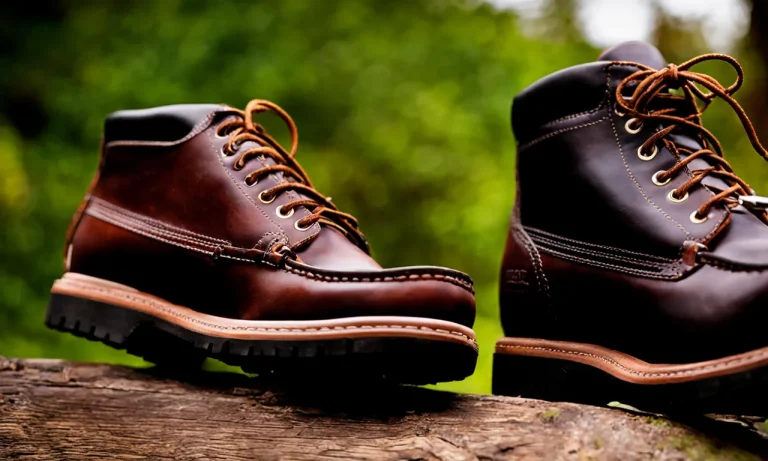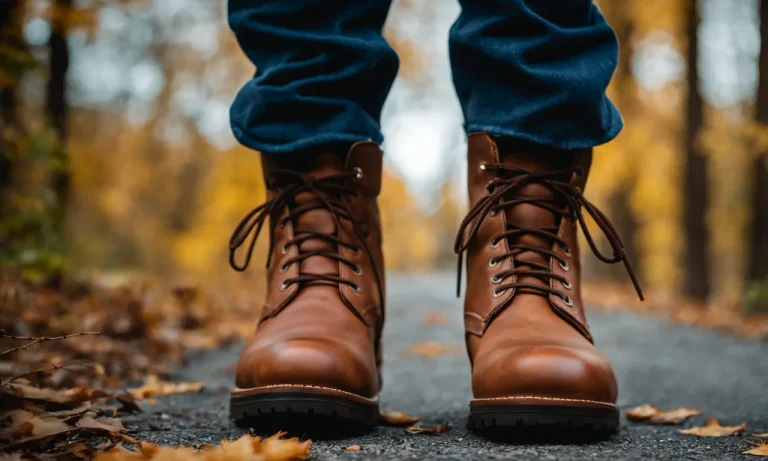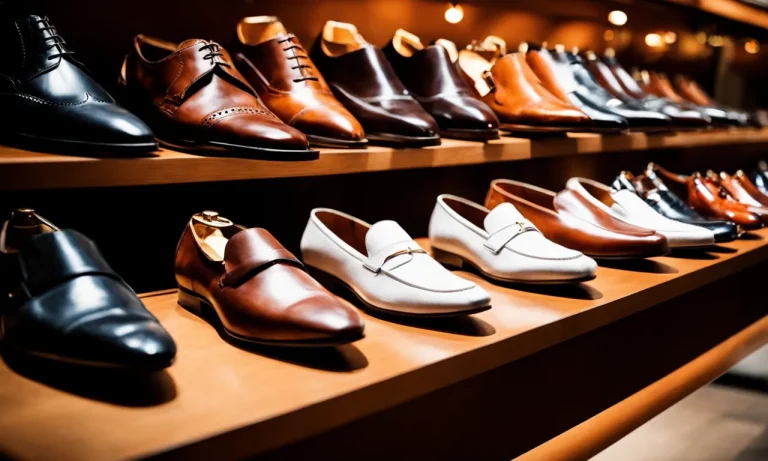Cowboy boots and spurs go together like peas and carrots, but have you ever wondered what purpose those metal spikes actually serve? If you’ve found yourself mystified by this iconic piece of cowboy gear, read on to learn all about the history and function of boot spurs.
If you’re short on time, here’s a quick answer to your question: Spurs are worn on cowboy boots to provide cues and minor prods to prompt and guide a horse during riding and herding cattle. Read on for more details on spurs’ origins and purpose over the years.
In this comprehensive guide, we’ll cover everything you need to know about spurs on cowboy boots, including their origins, different types, primary uses, legal regulations, and more. You’ll gain a full understanding of this traditional cowboy accessory by the time you reach the end.
The History of Boot Spurs
Boot spurs have a rich history that dates back centuries. They were originally designed as a tool for horse riders to communicate with their mounts and control their movements. Over time, spurs evolved from a practical riding accessory to a fashion statement, particularly for cowboys in the Americas.
Let’s explore the fascinating history of boot spurs and how they have become an iconic symbol of the Wild West.
Earliest Origins and Uses
The earliest known evidence of spurs dates back to ancient Persia and the Roman Empire. They were primarily used by soldiers and knights to enhance their control over their horses during combat. These early spurs were simple in design, consisting of a small metal wheel or spike attached to the heel of a rider’s boot.
As equestrian sports gained popularity across Europe, the use of spurs became more widespread among horse riders. They were not only used as a tool for communication but also as a symbol of social status. The design of spurs became more ornate, with intricate engravings and embellishments.
Adoption by Cowboys in the Americas
When Spanish conquistadors brought horses to the Americas in the 16th century, they also introduced the use of spurs to the indigenous populations. The Native Americans quickly adopted this new riding accessory and incorporated it into their own equestrian traditions.
However, it was the arrival of the cowboys in the American West that truly popularized the use of spurs. Cowboys relied heavily on their horses for herding cattle and traversing rugged terrain. Spurs became an essential tool for communicating with their horses and directing them with precision.
The design of cowboys’ spurs was often more functional than decorative. They featured a rowel, a small revolving wheel with pointed spikes, which allowed the rider to give subtle cues to their horse. The jingling sound of the spurs also served as a signal to other cowboys, making them instantly recognizable in a vast landscape.
Rise of Decorative Spurs
As the Wild West era progressed, spurs began to take on a more decorative role. Cowboys and ranchers started to personalize their spurs with unique designs, reflecting their individual style and personality.
The craftsmanship of spurs became highly valued, with skilled blacksmiths creating intricate patterns and engravings.
Today, boot spurs continue to be worn by horse riders and enthusiasts around the world. While their practical use may have diminished in modern times, they remain a symbol of tradition, heritage, and the spirit of the Wild West.
For more information on the history of boot spurs, you can visit https://www.history.com.
Purposes and Utility of Spurs
Cowboy boots are iconic symbols of the American West, and one of their distinctive features is the presence of spurs. Spurs are small metal devices that are attached to the heel of a boot, typically worn by cowboys and horse riders.
While they may be seen as decorative elements, spurs actually serve several important purposes and have a practical utility in various aspects of horsemanship.
Providing Cues While Riding
One of the primary purposes of spurs is to provide cues to the horse while riding. By applying gentle pressure with the spurs, the rider can communicate their desired movements and actions to the horse.
This subtle pressure can indicate to the horse to move forward, change direction, or perform specific maneuvers. The use of spurs allows for more precise and nuanced communication between rider and horse, enhancing their partnership and facilitating a smoother ride.
Herding Cattle
Spurs also play a crucial role in herding cattle. When working with livestock, cowboys need to be able to maneuver their horses quickly and efficiently. The use of spurs allows the rider to provide swift and precise cues to the horse, enabling them to navigate through herds of cattle with ease.
The jingling sound of the spurs can also serve as an auditory cue to the cattle, helping to direct and control their movements.
Motivating a Horse
In some instances, a horse may require additional motivation or encouragement to perform certain tasks or overcome obstacles. Spurs can be used to provide gentle reinforcement and encourage the horse to respond to the rider’s commands.
The presence of spurs can serve as a reminder to the horse to remain attentive and responsive, helping to maintain a productive and cooperative partnership between horse and rider.
Spur-Training Horses
Spurs are also used in the process of training horses. Trainers may utilize spurs to teach horses specific cues and responses, gradually introducing them to the sensation and understanding of the pressure applied by the spurs.
This training method helps horses develop a more refined understanding of the rider’s signals and aids in their overall training and discipline.
While spurs serve important functions in horsemanship, it is essential for riders to use them responsibly and with care. Proper training and understanding of how to use spurs are crucial to ensure the well-being and comfort of the horse.
It is advisable for riders to seek guidance from experienced trainers or equine professionals to learn the correct techniques and to understand when and how to use spurs effectively.
Types of Boot Spurs
Boot spurs are a classic accessory that adds a touch of style and functionality to cowboy boots. They serve multiple purposes, including aiding in communication with the horse and adding a unique flair to the cowboy’s outfit.
There are several different types of boot spurs available, each with its own distinct characteristics and designs.
Shank Styles
The shank of a boot spur refers to the part that attaches to the boot heel. There are different shank styles to choose from, depending on the desired level of comfort and functionality. The most common shank styles include:
- Plain Shank: This is the simplest type of shank, featuring a straight and unadorned design. It provides a basic level of functionality without any additional embellishments.
- Offset Shank: As the name suggests, an offset shank is positioned slightly to the side, allowing for more precise movements and communication with the horse. This type of shank is commonly used by professional riders.
- Swing Shank: A swing shank has a hinged design, allowing the spur to move freely back and forth. This provides increased flexibility and ease of use.
Rowel Designs
The rowel is the rotating wheel-like part of the spur that comes into contact with the horse’s side. Different rowel designs offer various levels of pressure and control. Here are a few common rowel designs:
- Ball Rowel: This rowel design consists of small balls positioned around the outer edge. It provides a gentle and less aggressive contact with the horse.
- Pointed Rowel: The pointed rowel features sharper and more pronounced spikes, allowing for a stronger and more precise communication with the horse.
- Blunt Rowel: A blunt rowel has rounded edges and provides a milder contact, suitable for horses that are sensitive to pressure.
Specialty and Decorative Spurs
In addition to the standard boot spurs, there are also specialty and decorative spurs available for those looking to make a statement or add a unique touch to their cowboy boots. These spurs often feature intricate designs, engravings, or ornate embellishments.
Some specialty spurs may also serve specific purposes, such as roping spurs or cutting spurs, which are designed for specific equestrian activities.
If you’re interested in learning more about boot spurs and their various types and designs, you can visit www.cowboybootspurs.com for a comprehensive guide and a wide selection of spurs to choose from.
Using Spurs Humanely and Legally
Spurs are an iconic symbol of the Wild West and cowboy culture. But what are they actually used for on cowboy boots? While spurs can be a functional tool for horseback riding, it is important to use them responsibly and considerately.
In this article, we will discuss the regulations on spur use, proper spur fitting, and ethical considerations.
Regulations on Spur Use
Before attaching spurs to your boots, it is essential to familiarize yourself with the regulations surrounding their use. Different equestrian organizations may have specific guidelines to ensure the welfare of the horse.
For example, the American Quarter Horse Association (AQHA) emphasizes the importance of using spurs humanely and prohibits excessive or abusive use. Similarly, the Professional Rodeo Cowboys Association (PRCA) has strict rules in place to prevent the mistreatment of animals during rodeo events.
By adhering to these regulations, you can ensure that your use of spurs is both legal and ethical.
Proper Spur Fitting
When using spurs, it is crucial to ensure that they are fitted correctly to your boots. Ill-fitting spurs can cause discomfort and potentially harm the horse. To determine the proper fit, measure the width of your boot heel and choose spurs that match or slightly exceed this measurement.
It is also important to select a spur with a shank length appropriate for your riding style and experience level. If you are unsure about proper fitting, consult with a knowledgeable professional or a trusted bootmaker who can provide guidance and ensure the safety of both you and your horse.
Ethical Considerations
While spurs can be a useful tool for communication between rider and horse, it is essential to use them ethically and responsibly. Using excessive force or inflicting unnecessary pain is not only inhumane but can also lead to negative behavioral responses from the horse.
Instead, focus on using subtle cues and rewards to guide your horse’s movements. Remember, the goal is to create a harmonious partnership based on trust and respect. By prioritizing the well-being of the horse, you can ensure a positive and enjoyable riding experience for both you and your equine companion.
For more information on proper spur use and horse welfare, you can visit websites such as www.aqha.com and www.prorodeo.com. These resources provide valuable insights and guidelines to help you use spurs in a humane and responsible manner.
Spurs for Fashion and Fun
When it comes to cowboy boots, one distinctive feature that stands out is the presence of spurs. These small, metal attachments are not only functional but also add a touch of fashion and fun to the cowboy boot style.
Let’s explore the various ways in which spurs are used in the world of fashion and how they contribute to the overall cowboy boot experience.
Spurs in Rodeos and Parades
In rodeos and parades, spurs play a significant role in enhancing the cowboy aesthetic. Cowboys and cowgirls don their boots with spurs as they showcase their horsemanship skills and participate in various events.
The jingling sound of spurs adds a sense of excitement and tradition to these events, creating an atmosphere that is both thrilling and nostalgic. It’s hard not to feel a sense of admiration for these skilled riders as their spurs glisten in the sunlight while they navigate through challenging obstacles.
Collecting Unique Spurs
For some enthusiasts, collecting spurs has become a passion. It’s not just about owning a functional piece of cowboy gear; it’s about finding unique and eye-catching designs. The world of spur collecting offers a vast array of styles, ranging from traditional to contemporary.
Some collectors focus on vintage spurs, seeking out those with historical significance or craftsmanship. Others search for spurs adorned with intricate engravings, gemstones, or other decorative elements.
It’s a hobby that allows individuals to appreciate the artistry and craftsmanship that goes into creating these small pieces of wearable art.
Spurs as Statement Pieces
In recent years, spurs have also gained popularity as statement pieces in the fashion world. Designers have incorporated spurs into their footwear collections, creating boots that combine functionality with high fashion.
These boots may feature oversized spurs with unique shapes, colors, or textures, making them stand out in a crowd. Wearing such boots can be a bold fashion statement, showcasing an individual’s love for western culture and their personal sense of style.
Conclusion
Spurs continue to be an iconic emblem of cowboy culture even today. With their long history and utility for riding, it’s no wonder cowboys still don cowboy boots with spurs for work and play alike. The next time you see someone sporting these metal accessories on their heels, you’ll understand exactly what purpose they serve.
Spurs are far more than just decoration – they’re an integral tool for horsemanship worn by ranchers and riders of all kinds.
We’ve covered the origins, uses, styles, and more when it comes to cowboy boot spurs. Whether you ride horses yourself or just admire the cowboy aesthetic, you now have a full understanding of this fundamental piece of gear.
So consider picking up your own pair of spurs to keep cowboy heritage alive and well – your boots will be ever more complete with these jingling metal companions on the heels.

